Skin Cancer
Skin cancer, including melanoma, is New Zealand's most common cancer. It is estimated that skin cancers account for 80% of all new cancers each year.
Skin cancer is the uncontrolled growth of abnormal skin cells.
It's very common
Skin cancer is the most common cancer affecting New Zealanders.
Skin cancers are commonly put into two groups - melanoma and non-melanoma skin cancer, with melanoma being the most dangerous.
More than 2,000 melanomas are reported each year in New Zealand. In addition, over 80,000 other skin cancers (such as squamous cell and basal cell carcinomas) are treated.
See some facts and figures about skin cancer in New Zealand.
What is melanoma?
Melanoma is the most dangerous skin cancer. If left untreated, it can spread rapidly to other parts of the body.
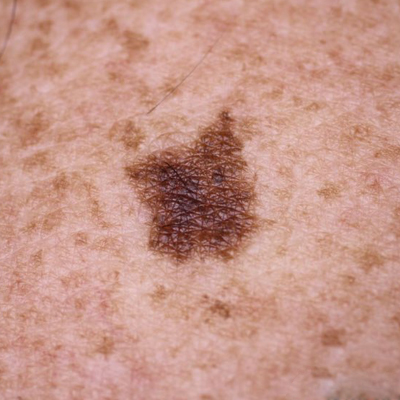
Melanoma example
Melanoma can:
- appear as a new spot
- be an existing spot, freckle or mole that changes colour, size or shape
- sometimes be itchy or bleed
- look different to other spots
- appear anywhere on the body (even on parts that aren’t usually exposed to the sun, such as the soles of your feet or under your toenails)
- be raised ('sticky out') and look shiny in appearance
- appear quickly.
DermNet New Zealand’s website provides more images of melanoma.
Visit Melanoma NZ for more information about melanoma.
What Non-melanoma skin cancer
The two common types of non-melanoma skin cancer are:
- basal cell carcinomas (BCC)
- squamous cell carcinomas (SCC).
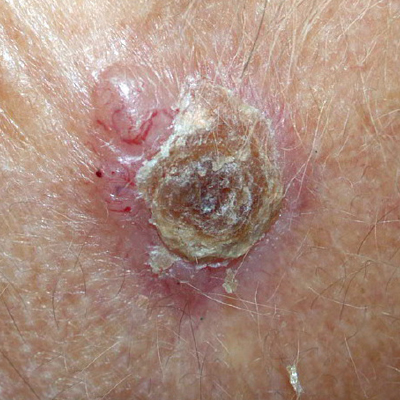
BCC example 1
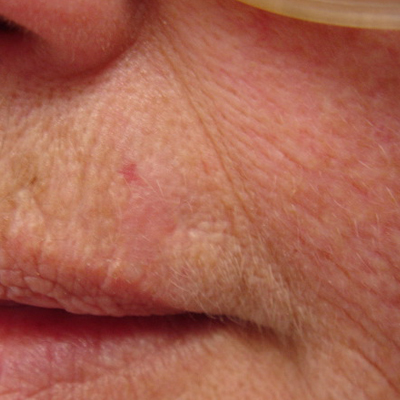
BCC example 2
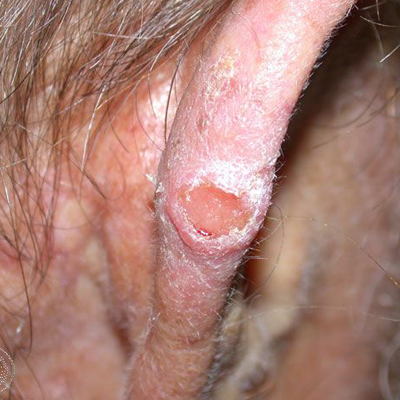
SCC example 1
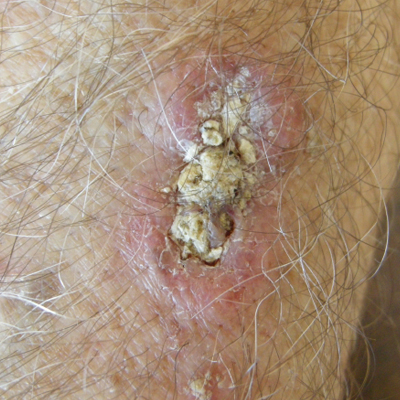
SCC example 2
Basal cell carcinoma
BCCs can appear as a slowly-growing, pale red or pearly smooth lump, usually on the face or neck.
Squamous cell carcinoma
SCCs often appear as a tender, raised, crusty, non-healing sore. They are commonly found on the hands, forearms, ears, face, neck or lower legs. SCCs on the lips and ears have a high risk of spreading.
DermNet New Zealand’s website provides more images of both BCCs and SCCs.
If you are concerned about any spot or lump, get it checked by a doctor as soon as possible.
Visit the Cancer Society of New Zealand for more information on skin cancer.
Read Stuff's August 2016 article 'Common lumps and bumps on and under the skin'.
This content has been reviewed by Dr Amanda Oakley CNZM MBChB PGDipHealInf FRACP FNZDS IFAAD on 14/11/2021.

Be SunSmart
New Zealand can have strong levels of ultraviolet (UV) radiation. Learn how to keep safe while still living life in the sun.
Learn how